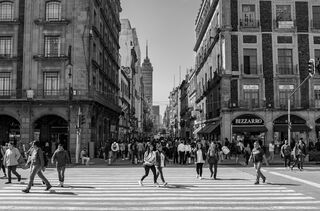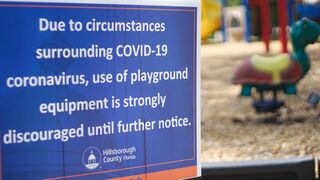Trauma
What Is Collective Trauma?
How it could be impacting us.
Posted May 23, 2020 Reviewed by Devon Frye
As the COVID-19 pandemic spreads across the globe, the term “collective trauma” has been used to describe the impact that this worldwide crisis has had on millions. Yet the term can feel elusive and many may not recognize that they themselves are experiencing the effects of collective trauma. This may leave many asking: What is collective trauma?

Whereas the term “trauma” typically refers to the impact that a traumatic incident has on an individual or a few people, collective trauma refers to the impact of a traumatic experience that affects and involves entire groups of people, communities, or societies. Collective trauma is extraordinary in that not only can it bring distress and negative consequences to individuals but in that it can also change the entire fabric of a community (Erikson, 1976). In fact, collective trauma can impact relationships, alter policies and governmental processes, alter the way the society functions, and even change its social norms (Chang, 2017; Hirschberger, 2018; Saul, 2014). For example, after the terrorist attacks on the United States on September 11, 2001, the United States altered their transportation and travel policies and procedures to enhance security. Although this traumatic incident occurred 19 years ago, the societal changes in travel policy can still be seen today.
Collective trauma is a response that can follow a variety of traumatic experiences. Situations that may elicit a collective trauma response may include but are not limited to: wars, natural disasters, mass shootings, terrorism, pandemics, systematic and historical oppression, recessions, and famine or severe poverty (Aydin, 2017; Chang, 2017; Hirschberger, 2018; Saul, 2014). Traumatic experiences like the ones listed above can lead to an onset of physiological, psychological, relational, societal, and spiritual consequences as reality is turned upside down. Although the trauma is dealt with collectively, the experiences and individual responses can vary greatly which may lead to increased confusion about what collective trauma looks like.
Let’s consider the experiences of Erik to get a better understanding of how collective trauma may present itself. Since the COVID-19 pandemic, Erik has found himself feeling “off” and a bit in a “haze.” As Erik has watched colleagues lose their jobs in his company, witnessed loved ones battle through illness, and watched the news—which describes a harrowing reality for millions around the world—he has found himself feeling helpless, depressed, and unmotivated. Most days, Erik finds himself feeling exhausted, plagued with headaches and body aches.
Before the pandemic, Erik would rely on his spirituality and faith to help him cope with life stressors, but this situation is leaving him confused about what he believes. Although Erik has a number of friends that he can call on for help, he has found it increasingly difficult to reach out for support. Erik has found himself more irritable with his family and children and wondering why he can’t just “shake this off.”

Erik is not an anomaly. He is human. He is someone who is experiencing collective trauma in response to a traumatic event that is impacting him, the community he lives in, those he loves, and the world around him. When trauma hits, it can leave our bodies and minds struggling to process and cope. Traumatic experiences can overwhelm the “ordinary human adaptations to life” (Judith Herman, 1992). During the COVID-19 pandemic, as individuals see their lives turned upside down by illness, death, job loss, alterations in their daily routine, decreased human interactions, financial difficulties and poverty, increased violence, and oppression and segregation, an influx of grief, confusion, distress, and traumatic stress may surface.
If you are finding yourself being impacted by the COVID-19 pandemic (or another collective trauma eliciting situation) and experiencing the consequences of collective trauma, know you are not alone. In fact, collectively in this time we are finding our new “normal” as we try to process, cope with, and learn to respond to the trauma surrounding us and within us. As we navigate these times of collective trauma, it is imperative that we recognize the impact of collective trauma, honor our experiences, extend empathy to ourselves and others, ask ourselves what we need and set a coping plan in response, utilize our resources or find resources that can support us in coping with the trauma (e.g. online therapy, crisis lines, organizations or churches that offer services or financial support, etc.), and we remember to take care of our bodies (see more on tips to responding to this time of collective trauma in Trauma of Pandemic Proportions).
As Kay Chang (2017) beautifully states, may we recognize that “Grieving takes time. Grieving for a collective trauma takes time, organization, and vision. Understanding how to respect the grieving process and foster the sense of hope is the first step for organizing and rebuilding a community. There is both a need to respectfully acknowledge the on-going burden of living without loved ones or the familiar ways of life and to thoughtfully foster new ways of building on the communal strengths of the survivors.”
References
Aydin, C. (2017). How to Forget the Unforgettable? On Collective Trauma, Cultural Identity, and Mnemotechnologies, Identity, 17:3, 125-137, DOI: 10.1080/15283488.2017.1340160
Chang K (2017) Living with Vulnerability and Resiliency: The Psychological Experience of Collective Trauma. Acta Psychopathol. 3:53. doi: 10.4172/2469-6676.100125
Erikson, K. (1976). Everything in its path. New York: Simon and Schuster Paperbacks.
Herman, J. (1992). Trauma and recovery: The aftermath of violence from domestic abuse to political terror. New York, NY: Basic Books.
Hirschberger G. (2018). Collective Trauma and the Social Construction of Meaning. Frontiers in psychology, 9, 1441. https://doi.org/10.3389/fpsyg.2018.01441
How to manage trauma. (n.d.). Retrieved from https://www.integration.samhsa.gov/clinical-practice/Trauma-infographic…
Saul, J. (2014). Collective trauma, collective healing: Promoting resilience in the aftermath of disaster. New York, NY: Routledge.


